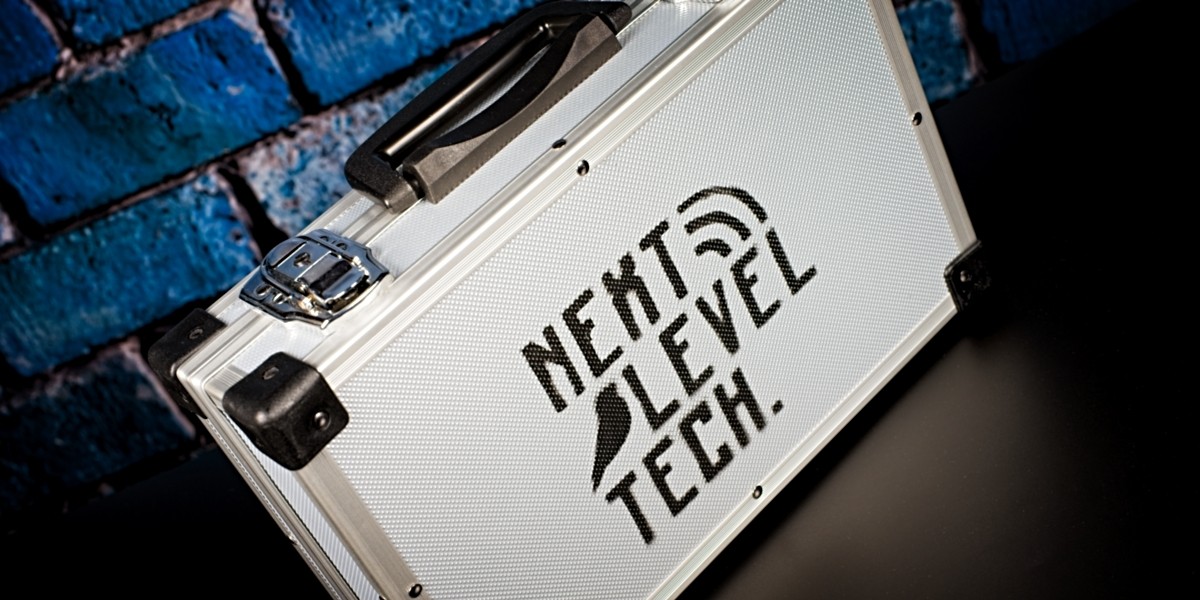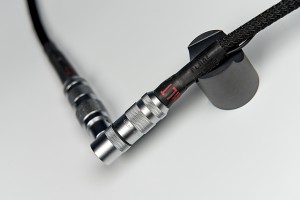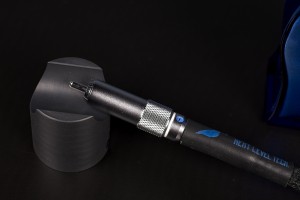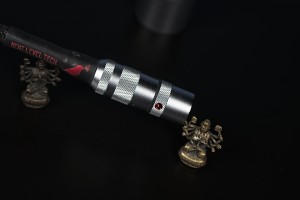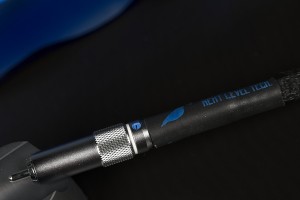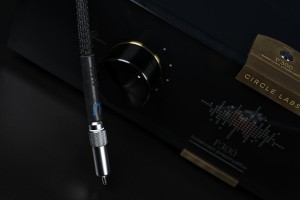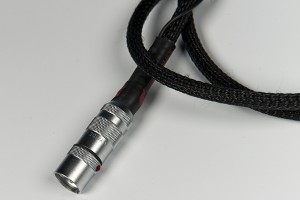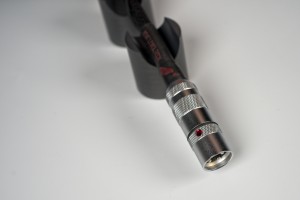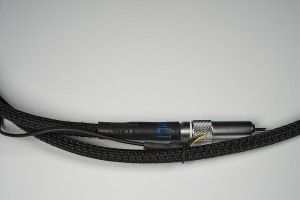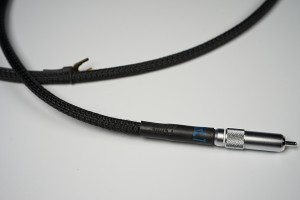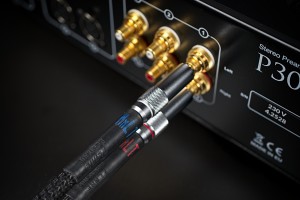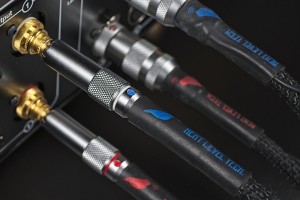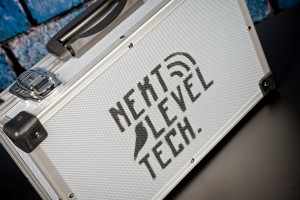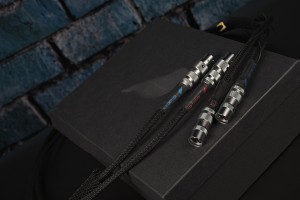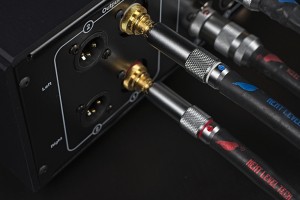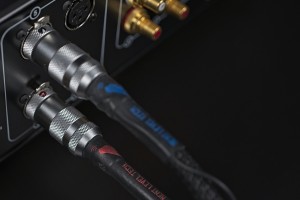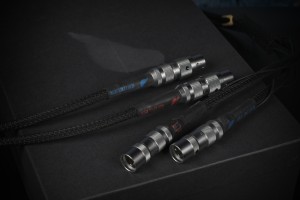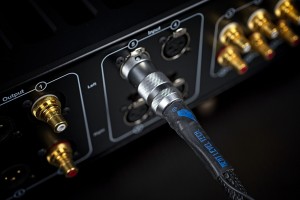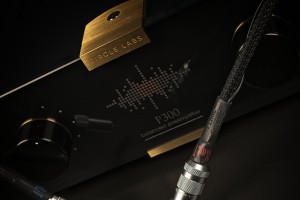There are currently so many brands offering audio cables on the market that on the one hand, everyone should be able to find exactly what they are looking for. On the other, though, searching for „the one” is a tedious job. Recently I’ve been trying to make it a bit easier for you by pointing out some particularly interesting cables. This time let me share my experience with RCA & XLR analog interconnects, Next Level Tech Flame.
Introduction
Next Level Tech, or NxLT, is quite a young brand established only in 2021. For now, they’ve focused their attention mostly on analog interconnects, and prepared three models in both, balanced and unbalanced varieties. The names are based on elements – Air, Water, and Flame, although I can’t say whether the naming has anything to do with particular characteristics commonly associated with these elements. I can say that the latter, the reviewed Flame, is the top achievement so far.
The story behind Next Level Tech is similar to some I’ve heard before. These often go more or less like this – products available on the market were either not good enough or too expensive, so like some other entrepreneurial, and industrious people before him, Mr. Robert Słowiński, the man behind NxLT brand, took it upon himself to develop cables that would satisfy his needs and expectations. For a long time, he gathered knowledge and experience through experimentation and time-consuming listening sessions as a DIY guy. As he admitted, in the past his reference he compared his own developments to, was Hijiri Kiwami Million. Funny enough, it is also one of my favorite interconnects, that I’ve owned for several years appreciating it for its incredible musicality, smoothness, and coherence combined with high resolution. As you can surely understand, someone who claimed this particular model was his reference had not much trouble convincing me that I should give his cables a chance.
As Mr. Słowiński said in one of the interviews, he ended up making cables he personally liked, but as it soon turned out many of his friends shared his appreciation for them. So he had no choice but to make more of those to satisfy the demand. To achieve that he searched for a proper conductor material and found some particular, rare, and very difficult-to-purchase copper. It took some time, but finally, he found and bought a larger quantity of it and it allowed him to convert his DIY passion into a commercial activity. This rare „dark”, 20 years old cooper is a basic material for Water interconnects. With time, more models came expanding the lineup.
Over the years I talked to many people who thought that becoming a manufacturer was a good idea only to find out that the challenges of commercial activity are way different, and much harder to face than making some cables/amplifiers/speakers, and so on for their own use and for a few friends. In this case, though, it seems that our designer had it all worked out. Not only does he continue to make his three models but also keeps working on adding new products to his portfolio. I took a peak into the company’s social media and it seems that recently Mr. Robert Słowiński has been working on speaker cable. It is a logical next step for the company and I guess, a highly anticipated one by those, who already own their interconnects.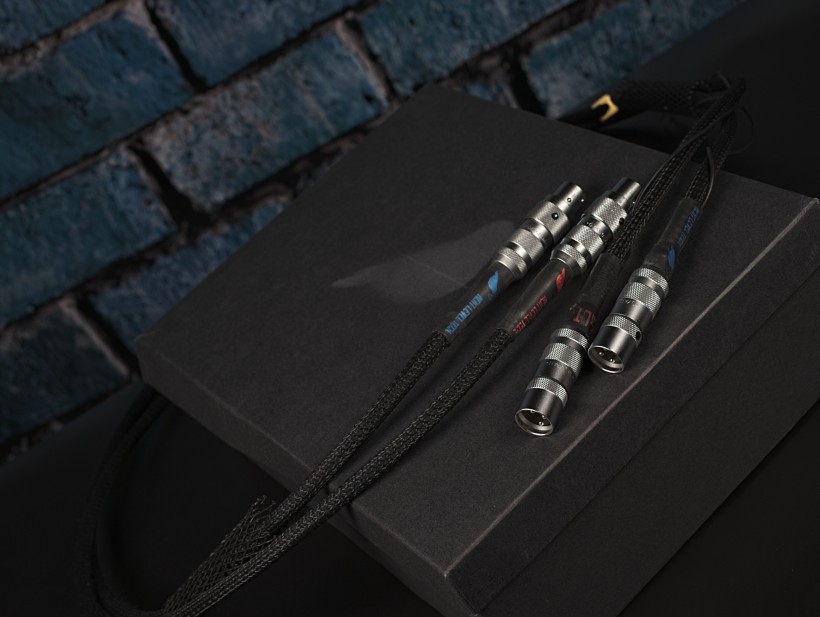
Design and features
The origin story behind the NxLT brand, as mentioned before, is that of a search for a proper conductor material. Yet, as every material, also this one has its limits (in terms of both, availability and its properties). So to develop an even better sounding and more expensive model, the tested Flame, Mr. Słowiński had to go back to the basics and find yet another conductor that would satisfy his needs and expectations for the new design.
This time the final choice was not a single or homogeneous material, but a combination of two of them – copper and silver. The company doesn’t really share the technical details of the design, which is understandable – there is no reason to hand over a recipe for their crown achievement to the public – yet one piece of information I found on their website is that they used „Conductors made of special 7N grade copper, never before used in interconnects”. In fact, two solid core conductors were braided together, silver and copper ones.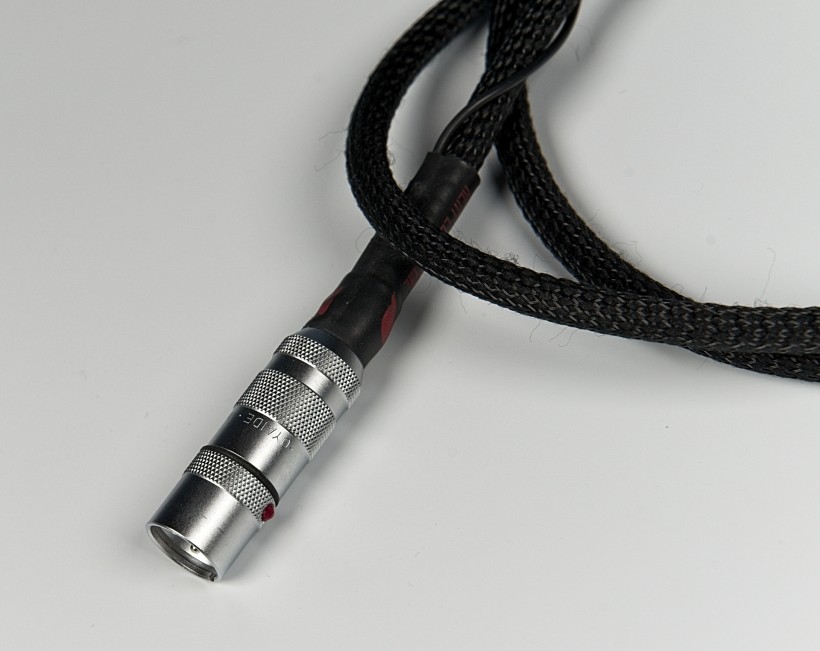
The design uses two shielding layers, one of them intended particularly to protect the signal against RFI. Flame features a nice black sleeve and is quite flexible which makes it easy to connect within the system, unlike some really stiff designs. The designer decided to terminate it with Oyaide plugs. He used FOCUS 1 plugs for the XLR version and Genesis for RCA. The latter uses a body made of copper alloy that is plated with platinum and rhodium and a contact pin made of phosphor bronze plated in the same way as the body. The Focus 1 XLR plugs also use a phosphor bronze pin plated with silver and rhodium and the body is made of silver and rhodium-plated brass. They also feature a push-pull locking system which you’ll probably have to get used to but once you do you will most likely find it very convenient. Yes, that’s a lot of information regarding the plugs, but I wanted to point out that first of all, they have to be intentionally selected for this purpose as they are not the most popular ones on the market, and secondly, they are rather expensive so they really had to make a difference for the designer to decide to use them.
The cables are directional and the proper direction is clearly marked on both, RCA and XLR versions even if the latter doesn’t really need it. All units are hand-made and initially broken in before they are shipped to customers. Yet, the manufacturer, based on experience, recommends using them for another 2-3 days in one’s setup before actual critical listening because only then do they fully „accommodate” in the system and reveal their full potential. I have to confirm this observation – it did take a few days before both Flame interconnects delivered their optimal performance. There is one more feature that is optional and was present in both pair delivered for test – a wire ending with spades that may connect one of the internal shields with an external ground, whether in a device (on the receiving end) we connect it to, or some grounding conditioner. The simplest way to use them is to connect the spades to not used RCA inputs – they fit perfectly. The feature costs extra (not much, mind you) and allows users to experiment. The cables are double-packed. On the outside, there is a nice carton black box with the brand’s logo, inside it you will find a solid metal case that will surely protect the cables against anything that may happen to them in transport.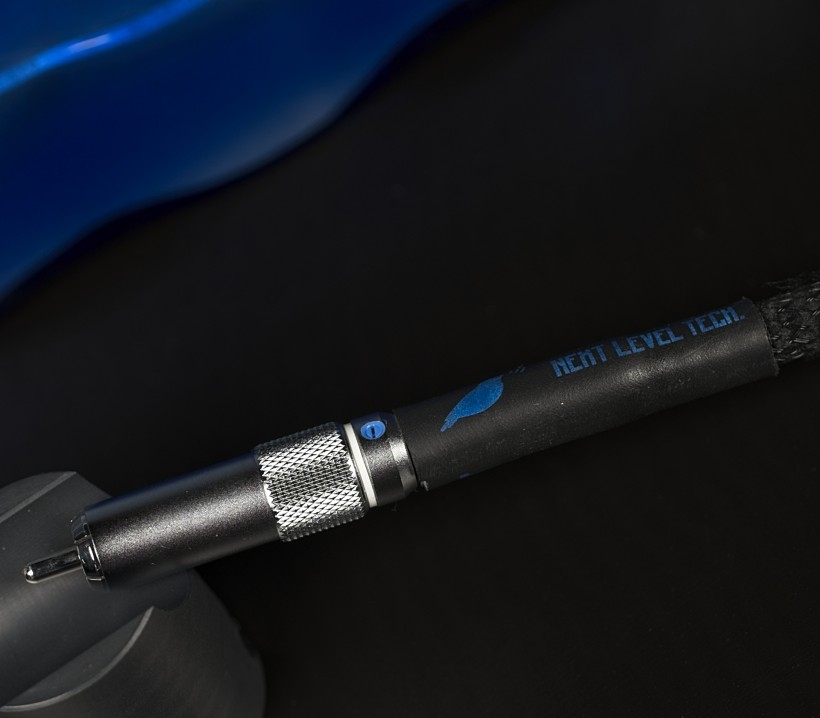
Sound
To be clear, I have never listened to Air or Water, so I can’t compare Flame to either of them. Instead, I compared the RCA version to Hijiri Kiwami (for reasons that should be clear by now), but also to my two other references, Soyaton Benchmark, and Bastanis Imperial. As for the XLR version, since until recently, I had not really used balanced interconnects at all in my system, the only such IC I have is KBL Sound Zodiac (the original version). Price-wise, it cost about half as much as Flame, but it was the only one I could compare it directly to. I reviewed some other, more expensive XLR interconnects recently (van den Hul CNT and David Laboga Custom Audio 3D-R, see HERE) in the same system, and since the memories were still quite vivid I tried to use them as my reference as well.
The RCA Flame connected my freshly upgraded Pacific DAC (the upgrade turned it into Pacific 2 which proved to be a significant improvement – Pacific owners can treat it as a hint…) and Circle Labs P300 preamplifier, and the Flame XLR was used between the latter and Circle Labs M200 power amplifier.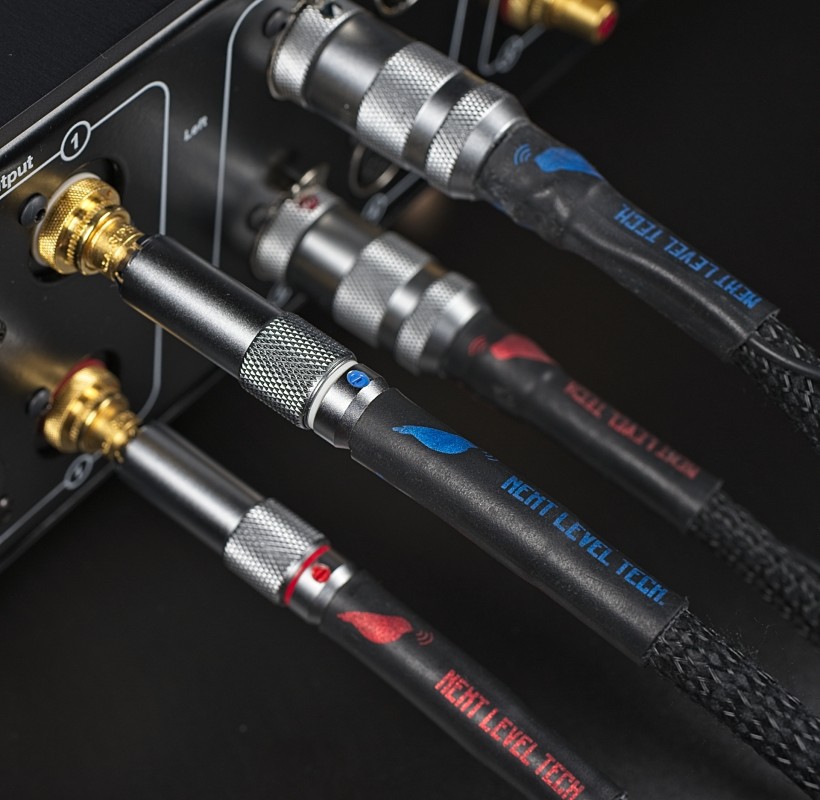
FLAME RCA
There was a time when I had just one reference RCA analog interconnect, the Hijiri. It was, in a way, a happy time. I used it in my system all the time, I used it for pleasure and for reviews, and I was sure it would always do a great job. And it did. Currently, I have three reference RCA interconnects, as the Soyaton Benchmark and Bastanis Imperial joined the ranks. Each of them is excellent and, to some extent, different. It allows me to select the best fit for a particular setup, which is a good thing, but it forces me to choose between three cables that I love. And now I had to pit one or all of them against what seemed to be a serious contender, Next Level Tech Flame. And, oh boy, what an epic battle it turned out to be.
The Hijiri Kiwami is the most beautifully natural, and warm sounding among them all. Not too warm, mind you, but compared to the others, the warmest and the richest in the midrange. Soyaton Benchmark is the most (wonderfully!) open and spatial one, and the flow of music is equally amazing as with Kiwami even if the midrange is not quite as rich as with the latter. Bastanis Imperial, as the name seems to suggest, is sort of majestic one among them – calm, well-behaved, precise, most neutral, and the quietest – that’s what one expects from a (good) emperor, right? So where does Flame fit in all that?
That probably should be the last sentence of this review, but let me put it out there already – fairly quickly I was sure that NxLT Flame belonged to the same class of cables, commonly known as high-end. Not even for a second while switching between all these four interconnects did I feel that Flame overall fell short of the competitors. Sure, each of them displayed its own prominent qualities and did something in an even better way than the others while the rest were half a step ahead in some different areas. But ultimately they all offered a fantastic performance, and all of them, which is always extremely important to me, focused my attention first and foremost on music, not on sound. It’s my way of saying that none of them is particularly (overly) analytical, and none of them goes with a fine-tooth comb through recordings focusing on finding their weaknesses. They do, on the other hand, create a bond, a relationship between listener and performers, and the music they play, delivering a realistic, immersive experience.
To be clear, not being analytical in this case doesn’t mean that, let’s finally focus on Flame, it lacked anything in terms of resolution, details, differentiation, and so on. It most definitely didn’t! It just did what most true (as the term has been used quite loosely recently) high-end audio components do – it delivered on all fronts but used all the individual features audiophiles value so much combined to present music in the best possible, most convincing, coherent, and natural way. I don’t know about you but that’s what I expect, or even demand from a high-class audio component, including all cables in my system. And there are many ways to achieve such a result – the NxTL designer found his own for Flame to reach this top level and deliver an exquisite performance.
A digression, or formality, if you will. Cables don’t „sound” – they can’t as their role is to transmit signal with as little influence/distortion/coloration as possible. Obviously, they do influence the sound, and in what way and how significantly depends on how are they designed, how well are they made, what materials are used, and so on. It is easier though to write or talk about cables sounding one way or the other – it makes reading/communicating easier, but hopefully, you can understand that using all the terms, suggesting that cables sound one way or the other, is for mine and your convenience only. End of digression.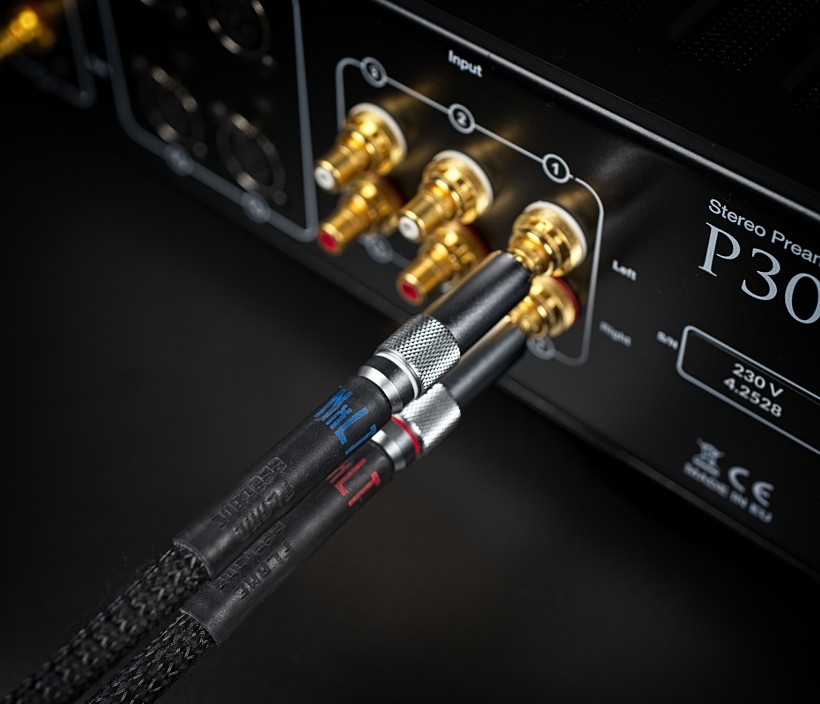
So what you get with Flame RCA, assuming you decide to use it in an already good-sounding, well-balanced setup, as it didn’t seem to be a „tool” for fixing any particular issues, but rather to make things better, should be a beautifully coherent, refined, highly resolving, and immersive performance. There are no ‘striking’ features – nothing really jumps out at you trying to attract attention or wow you due to some particular feature or quality of the sound. It’s not about the best bass, treble, midrange, space, imaging, or anything else. It is about a consistent whole, about the smooth flow of music, about using tons of individual qualities, details, and subtleties to deliver an exciting, open, and sort of „fresh”, and engaging performance.
You may still ask, what are the ‘specialties’ of Flame? Its sound is very open and full of air letting instruments ‘breathe’. That’s what makes it similar to Soyaton Benchmark. I could hear it very clearly with Park Stickney, Dino Contenti & Gigi Biolcati’s album „Who Is.. The Lion, The Wolf And The Donkey?”. Harp, double-bass, and percussion were recorded really well with lots of air and space, good imaging, and precise placement on the stage, with sparks coming from crisp cymbals, and beautifully tuneful, deep, yet pretty tight bass. The clarity and transparency of this recording plus nicely caught reverb, all added up to a stunning performance skillfully delivered with Flame in an agile, vivid, lively, yet very orderly way.
The tested cable clearly shared also a very good resolution with my reference interconnects allowing a deep insight into every recording but only ‘on demand’ so to speak. It did not attack me with every detail and subtlety, it didn’t push the fifth-row instrument in Beethoven’s 9th conducted by Boehm to the front just because it sounded most prominent at some moment, but rather kept it where it belonged space-wise, emphasizing its role, and sound in the right, specific moment. In other words, this Flame is not wild, fast spreading, or dangerous, but a highly controlled, precise, yet still powerful one.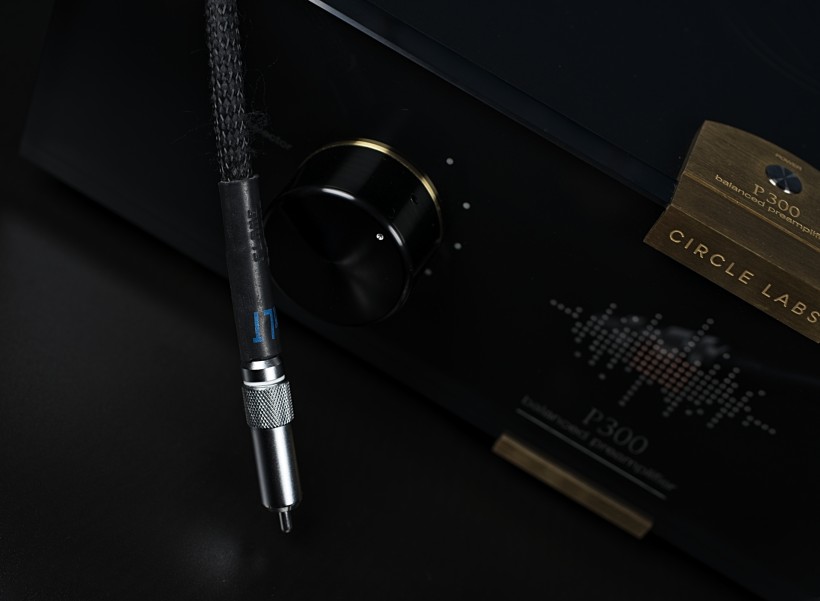
Flame XLR & RCA
Everything you’ve read so far involved Flame RCA plugged in between Pacific 2 DAC and Circle Labs P300 preamplifier with KBL Sound Zodiac XLR IC between the latter and the CL M200 power amp. In the second part of the test, Flame RCA was supplemented with Flame XLR (replacing Zodiac) but this time I also used my analog rig (with Bastanis Imperial RCA IC between phonostage and P300). So there was one Next Level Tech Flame XLR interconnect in the system when listening to my turntable and two (XLR + RCA) when listening to digital files. It allowed me to do both, check the difference between tested interconnect and Zodiac, and find out whether the influence of two Flames added up or produced even better sound than just one.
The differences between all the RCA interconnects were based on specific features and qualities of each of them, and they all represented a very high level overall. This time I was comparing a basic cable of one brand (KBL Sound Zodiac) with the top achievement of the other (the reviewed NxLT Flame). Hence the differences were much more significant, there was a gap between them performance-wise. It would be interesting to compare Flame directly against the recently tested DL Custom Audio 3D-R XLR or van den Hul The CNT, but I had to send those back before listening sessions for this test began. Yet, it so happened that just at the very end of listening sessions I got a chance to put Flame XLR head-to-head against another great competitor. We’ll get back to it later.
Compared to Zodiac, Flame offered more of everything. The sound was more dynamic, more energetic, more open, more resolving, the range extremes were better textured, extended, and defined. The whole presentation seemed livelier, and yet smoother and calmer at the same time – it may seem contradictory but it really isn’t. It’s just a result of a more refined, more orderly, hence more natural presentation. The tested interconnect provided a better insight into deeper layers of any good recording, delivering an impressive flow of details and subtleties without emphasizing them, without focusing my attention on them unless it was necessary or I wanted to take a deeper dive into some particulars.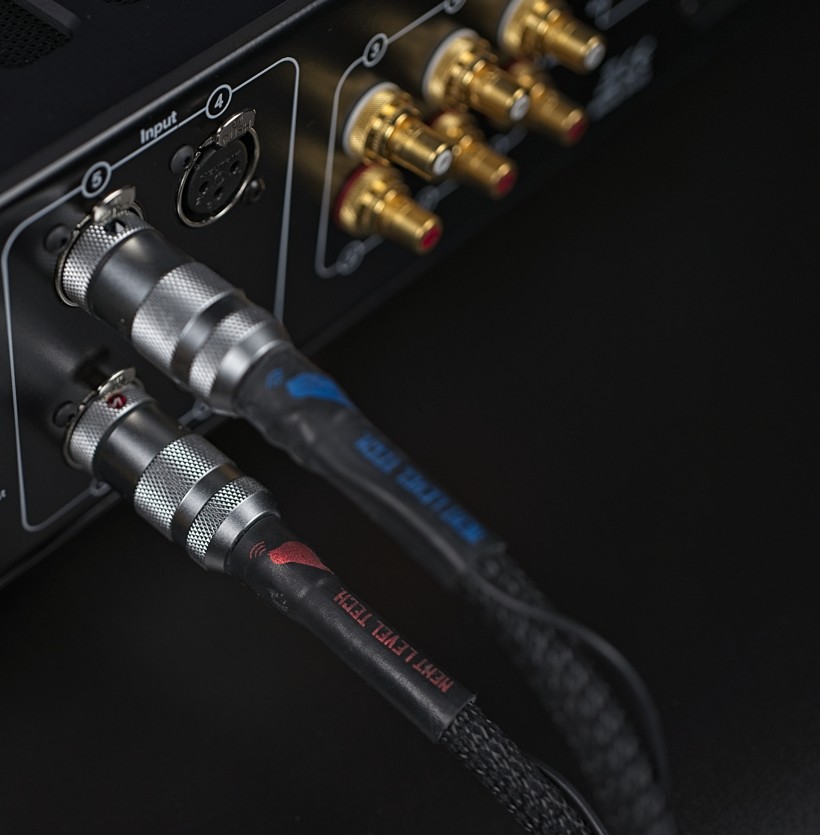
Like, say, on the live album by Antonio Forcione Quartet (played this times from files, which also means there were two Flames in use), where I (as a fan of a guitar) had to take a closer look at one of my favorite guitar player’s performance and the sound of his instrument. And the Flame allowed me to study the musician’s technique, the details of the guitar’s sound, of its strings and wood. All these elements were presented in a very clean, orderly, and yet non-obtrusive fashion. Unless I decided to delve deeper, all the detailed information was just a part of a bigger whole. It made it richer, more complete, more natural and so incredibly enjoyable! Even without direct comparison, I can risk a claim, that Flame would be a worthy competitor to both, DL Custom Audio 3D-R and van den Hul The CNT XLR interconnects even if each of them had distinctive features.
One of my favorite vinyl records (which means only the XLR version was involved), „Spirit of Nadir” by Oleś Brothers, seemed to gain more dimensions with Flame. I’ve always loved the impression of almost infinite space surrounding musicians, but with Zodiac, it ultimately was somewhat limited. Flame opened it further up, and extended it way beyond the walls of my room making the impression of sharing the same desert (desert here is only an impression, not an actual place where the album was recorded) with the duo even more convincing. I know from one of the brothers, that he wasn’t completely happy with this recording, but I love it and Flame helped me admire all the intricate details of Marcin’s double bass playing, as well as Bartłomiej’s performance on the drums. It’s amazing how much sound can only two instruments ‘produce’ in skillful hands, how they can fill up the room and then some. One still needs a system that is able to convey all that. Mine, supported by Flame XLR, did a great job in this regard.
I listened to lots of albums from both, vinyl records and (mostly hi-res) files and the conclusion was quite simple – using two Flame interconnects in the system sort of boosted all the positive features I’d described earlier for both of them. Because they do not really differ, they do offer the same set of qualities. The latter doesn’t double when two Flames are used, yet some elements such as focus, as this calmness/lack of any hints of nervousness in the sound seem to get even bit better. The XLR again (again, as the same happened with David Laboga Custom Audio top cables) impressed me a little bit more but that’s because I compared it directly with another interconnect that wasn’t on the same level, while the RCA version was compared to three other fantastic competitors. Long story short, if you need more than one interconnect in your system and you can afford only one Flame – buy one and use it to replace the weakest link in your setup. The second one probably won’t offer as much progress (unless there is still some other cable bottleneck) but if you like your first Flame it still will be worth it.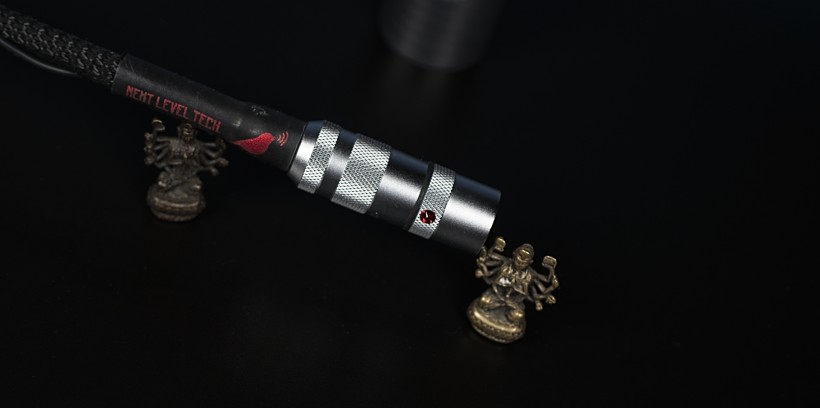
Last but not least, gently urged by Mr. Słowiński, I listened to the music with both interconnects in the signal’s path with one of them and later both connected to the neighboring not used RCA inputs using these additional wires with spades that are connected to one of the shielding layers. Mr. Robert told me that I should expect some changes in the sound that some find attractive, and others don’t. He wanted me to learn about these changes and whether I liked them. For this short comparison, I used a few live recordings such as Hadouk Trio’s “Live at FIP”, and another album recorded at the same place by Musica Nuda, but also Patricia Barber’s “Companion”, and the famous “Jazz at the Pawnshop”. Due to all the already-described qualities I truly enjoyed each and every one of those albums when listening to them without those additional grounding connections. To check them out I connected the spades to unused RCA inputs in the preamplifier and then connected also XLR’s additional connectors to RCA inputs in the power amplifier. The differences were rather subtle, to be honest, although at least in some recordings one or the other solution brought clear benefits. It seemed to me that with spades connected sound became a touch… sweeter, for the lack of a better word, and slightly more vivid, and more palpable at the same time.
All the spatial relations between phantom images on the stage and their interactions with the venue’s acoustics were presented in a slightly clearer way. The sound seemed sweeter because of the treble – a bit richer and heavier, so to speak, but also due to the bass, which got a little bit softer and rounder. Those subtle changes in the band’s extremes shifted my attention more toward the midrange. The intimate jazz and vocal recordings became even more intimate, more emotionally engaging experiences, which I enjoyed a lot. Still, whenever brass or percussion instruments played a significant role I preferred the crisper, touch-better-defined, more vibrant presentation the NxTL Flames delivered without those additional grounding connections. Long story short, using the optional feature of Flame is more of a personal choice than a matter of improvement. It may work in some setups better, it can make listening to certain genres more immersive, also more spatial, and it is very convenient as it is easy to connect and disconnect whenever you like. It doesn’t add much to the price, so you may order your pair(s) with it and decide whether or when you want to use it as you go.
One more unexpected comparison
Now, sort of an addendum. Just when I finished this review, Siltech Classic Legend 880i XLR (with Oyaide plugs) unexpectedly fell onto my lap (not literally). And so I used the chance for a direct head-to-head. I had tested Classic Legend – IC, speaker, and power cables, before and I was happy with the sonic performance and excellent (especially considering the brand) price/performance ratio. OK, the latter goes mostly for the 380i and 680i series, not that much for the significantly more expensive 880i line, yet the latter is the clearly best among them (and still quite affordable considering the brand) and one Flame should be compared to. This part of the assessment process was quite short and very „last minute”, yet it proved again the class of the NxLT top achievement so I decided to mention it.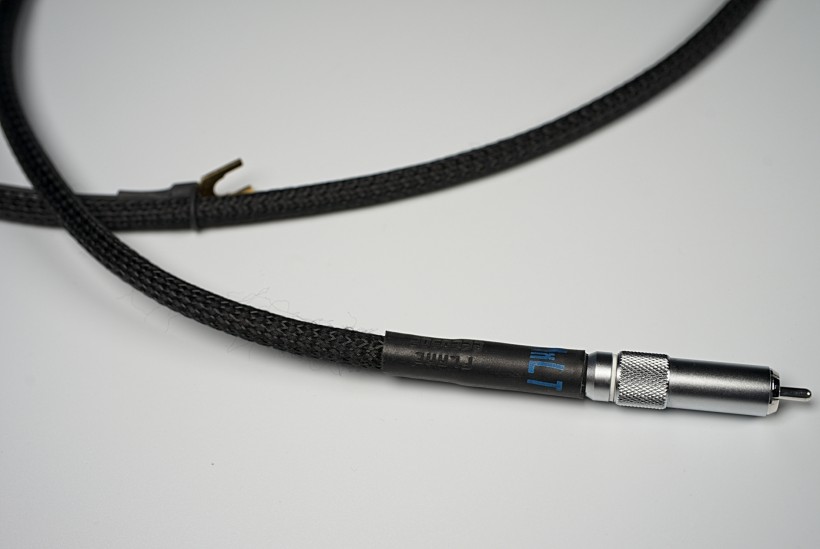
For this comparison, I used a live acoustic recording of Musica Nuda. It’s a duo with vocals and double bass. Let me start by saying that both, 880i and Flame delivered stunning performances. Both excelled in conveying this unique, engaged atmosphere of a concert taking place in a relatively small venue featuring quite active/enthusiastic fans. There were some differences between the two though. The first one I noticed was a bit tighter lower bass with Siltech. The second was a slightly more extended reverb on voices delivered by Flame. The upper notes in the female voice were a touch smoother with Siltech, but the little bit more „raw” presentation by Flame had its charm as well (because there was no exaggeration) and… I guess, it was actually the more faithful one.
Both cables saturated sound with the high energy characteristic of a live performance, and both equally benefited from all the acoustic cues captured in the recording which allowed them to present all spatial details of the venue. Both delivered a coherent, natural, fluid sound that was highly enjoyable. Long story short, these are two excellent balanced interconnects, offering very natural, musical sound and I would be happy with any of them. Obviously, in a different system, one of them could take a clear lead, but in mine, the choice would be almost impossible to make. Unless the price was a decisive factor because then NxTL would be an easy choice.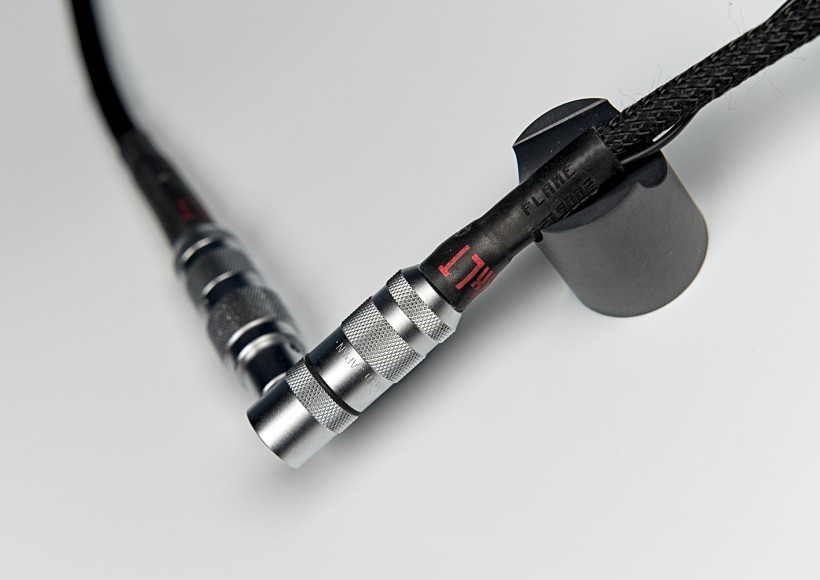
Summary
The basic conclusion is simple – if you like the sound of NxTL Flame, if it fits your setup and expectations, it doesn’t really matter whether you need RCA or XLR version. Any of them will offer you a similar, excellent performance or a high-end, complete, refined sound if you will. Flame is tonally a bit more on the neutral side than Hijiri Kiwami, yet it is as musical, and natural as the designer’s own reference. It’s a bit less sweet in the treble, not as rich when it comes to midrange as the Japanese cable, yet as involving, as immersive even, as any interconnect I know. Its focus is on music not on sound, if you know what I mean. If you don’t, let me put it in audiophile terms – NxTL Flame is not a particularly analytical cable despite being highly resolving, transparent, and detailed. It prefers and follows the natural flow of music rather than looking for downsides of a recording it plays. All in all, it’s an excellent performer that for the money is really hard to beat and can successfully compete even with many more expensive cables. As long as your focus is on music, on emotions, on having fun when listening to the music (it’s a great all-rounder so the genre is irrelevant), and not on analyzing the sound (which is still possible, just difficult because of how engaging the performance is), Next Level Tech Flame will offer you a hell of a musical experience combined with one of the best bang for the buck ratios I know.
Prices (when reviewed):
- Next Level Tech Flame RCA: 1631 EUR / 1m (+ 135 EUR for each additional 0,25 m)
- Next Level Tech Flame XLR: 1907 EUR / 1m (+ 185 EUR for each additional 0,25m)
- Optional grounding wire with a spade termination: 35 EUR / set
Manufacturer: Next Level Tech
Associated equipment:
- Digital source: a custom passive server with WIN10, Roon, Fidelizer Pro 7.10, JCAT NET XE, and JCAT USB XE cards with FERRUM HYPSOS Signature power supply, KECES P8 (mono) linear power supply for the server, JCAT USB Isolator
- D/A Converter: LampizatOr Pacific 2 +Ideon Audio 3R Master Time (USB signal regenerator)
- Analog front end: J.Sikora Standard MAX turntable, J.Sikora KV12 tonearm, J.Sikora KV12 MAX tonearm, AirTight PC-3, phono stages: Grandinote Celio MK IV, ESE Lab Nibiru V 5.
- Power amplifiers: GrandiNote Shinai, Circle Labs M200, Art Audio Symphony II (modified)
- Preamplifier: Circle Labs P300
- Loudspeakers: GrandiNote MACH4, Ubiq Audio Model ONE Duelund Edition.
- Interconnects: Bastanis Imperial x2, Soyaton Benchmark, Hijiri Million, Hijiri HCI-20, TelluriumQ Ultra Black, KBL Sound Zodiac XLR, David Laboga Expression Emerald USB, David Laboga Digital Sound Wave Sapphire Ethernet
- Speaker cables: Soyaton Benchmark
- Power cables: LessLoss DFPC Signature, Gigawatt LC-3
- Power: Gigawatt PF-2 MK2 and Gigawatt PC-3 SE Evo+; a custom power line with Gigawatt LC-Y in-wall cable; Gigawatt G-044 Schuko and Furutech FT-SWS-D (R)
- Network: Silent Angel Bonn N8 + Silent Angel Forester F1 + optical LAN isolator
- Racks: Base VI, Rogoz Audio 3RP3/BBS
- Anti-vibration accessories: ROGOZ-AUDIO SMO40 and CPPB16 platforms and ROGOZ AUDIO BW40MKII feet, Franc Accessories Ceramic Disc Slim Feet and Wood Block Platform, Graphite Audio CIS-35 and IC-35


